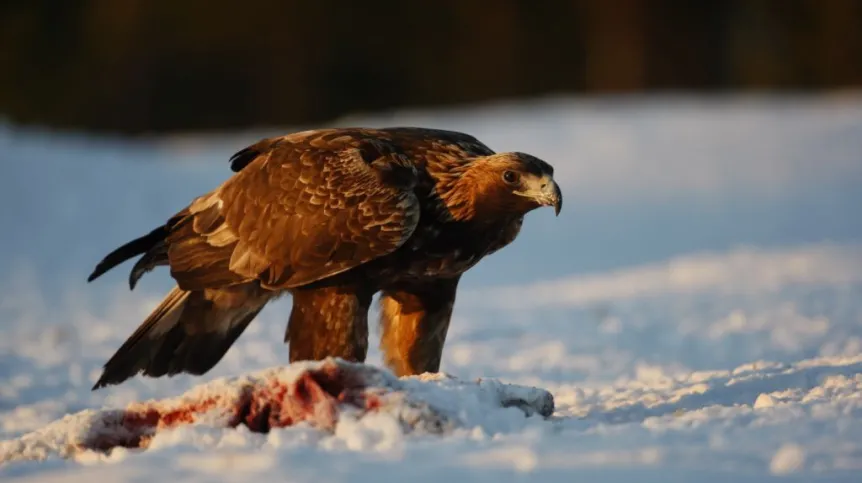
Golden eagles living in the Polish Carpathians start to toot and visit their nests at least a month earlier than usual, told PAP Dr. Marian Stój of the Eagle Conservation Committee.
"We have been observing a stir among golden eagles for several days. They already begin to court, visit their nests, I even saw one pair copulate" - said the ornithologist.
He believes that such behaviour is a result of the mild winter. "The air temperatures are getting higher every day, and not much snow remains in the fields. Consequently, this leads to the behaviour of eagles typical for early March" - he added.
He emphasised that this year the interest in nests started almost a month earlier than usual. "In a normal winter, eagles return to the nesting grounds in late February and early March, in the third decade of March to lay their eggs, which take about 40 days to hatch" - he explained.
Stój is not concerned about a possible return of winter that would threaten the clutches. "Eagles can brood even in adverse weather conditions. These are large birds, which persistently warm laid eggs" - he noted.
He reminded that "eagles spent this year\'s mild winter on their nesting grounds". "They did not have to move far from nests in search of food, or descend into the lower parts of the mountains" - noted naturalist.
In Poland there are about 35 pairs of golden eagles, most of them - more than 30 pairs - in the Carpathians. In addition to the Carpathians, these birds can be found on the Baltic Coast, in the Słowiński National Park, and in Masuria.
Eagle’s body length exceeds 80 cm, wingspan - two meters. The predator feeds mainly on mammals and birds. Eagles hunt hares, martens, domestic cats, owls, ravens, buzzards. They also feed on carrion. They are capable of very fast dives, attaining speeds of up to 160 km/h.
Their nests are located in hard to reach places, crowns of tall trees or rock ledges. (PAP)
kyc/ drag/
tr. RL













